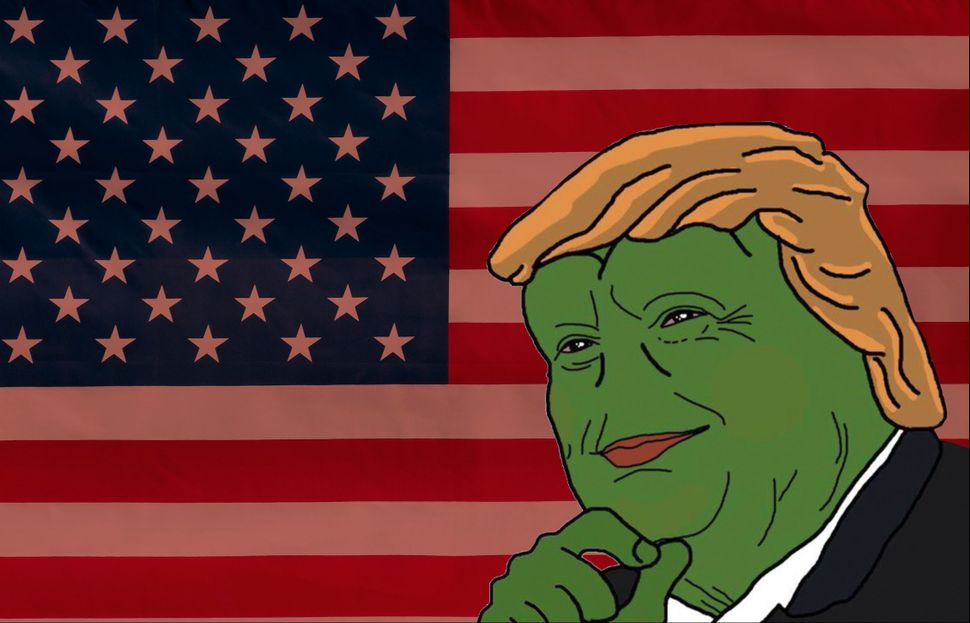
Have you ever laughed at a meme and then realized that it actually contains denigration of social groups? How do you feel about it? Are you still entertained, or do you feel guilty for laughing? Let’s discover this tricky mix of humor and harm, because memes aren’t always as innocent as they seem.
What is Memes and What Does it Do?
In current world, especially in digital era, mimetic text–image combinations, or “memes,” along with graphics interchange formats (GIFs) and short videos are part of everyday online communication (Milner, 2016). Memes are not only sources of amusement and entertainment but also cultural assets that strengthen group cohesion (Miltner, 2014). For example, this famous meme unites people who feel the pull of procrastination or distraction, makes these people laugh. This the magic of memes: they make us feel as one.
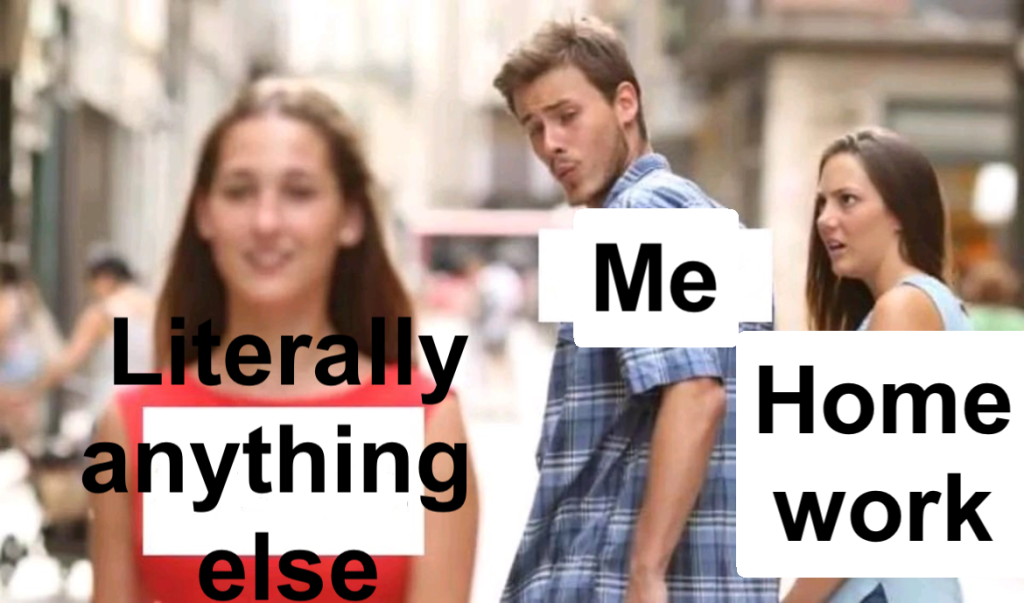
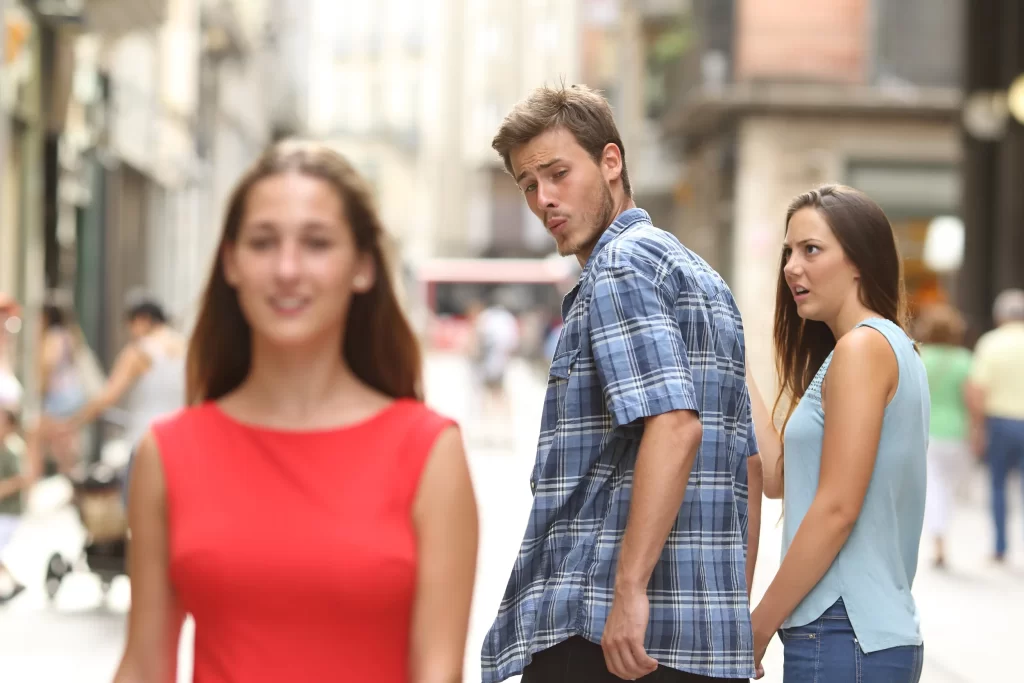
Why Memes Could Be Humorous Hate Speech
Since memes are so good at building unity, it’s like the flip side of a coin—they can also tear groups apart and hurt people. The internet’s overflowing with examples of memes that start as “jokes” but end up as disparaging humor, slamming individuals or entire social groups. This is what we call humorous hate speech. Humor’s defined as “things that elicit or are intended to elicit laughter, amusement, or the perception that something is funny” (Warren et al., 2021: 42). and memes totally fit that bill. But they cross into hate speech territory when they match what Parekh (2012) describes: content that “expresses, encourages, stirs up, or incites hatred against a group” based on things like race, gender, or religion (p. 40).
Here is a clip, which causes the strong dissatisfaction among African Amercians.
The Chinese girl in the video call IShowSpeed the n-word to his face—in case you do not know who IShowSpeed is, he is one of the most Influential YouTuber at present. This young man is famous with his exaggerated and funny performances on everythings, including controversial topics like racism. He is now doing his real life streaming in China.
The girl, apparently, was doing something ridiculous. It will not be considered as “traditional racial discrimination” due to her behavior just make no sense. This is also reflected by the reaction of IShowSpeed, he was not angry, he was confused and asking whether that girl knows what she is saying. In fact, this girl was cosplaying a racist character from a game called Blue Archive. In that game, the character calls another character the n-word.
Hence, let’s guess what this girl wanted to do. She probably wanted to give the players of that game—or the group that enjoys that meme—the most incredible gift by discriminating against the most famous black person she could manage in the real world, so as to make their relationship closer.
Is she a racist? —Do you find this question a little bit hard to answer?
Why Humorous Hate Speech is So Diffcult to Spot?
It’s tough to pin down humorous hate speech because humor gives hate a free pass—it makes it feel acceptable to exist. The critical part is mixing in some funny elements, signaling that what’s happening, or about to happen, should just be taken as a joke.
Take a standalone line like “women don’t have rights.” If somebody post it online it will be distinguished as hate speech immediately. But add something like “women have two sides, one left and another left, because…” in front of it, and suddenly the hate doesn’t be shown obviously. It could even starts to spread. People are much more likely to tolerate humorously communicated prejudices than explicitly disparaging remarks (Mendiburo-Seguel and Ford, 2019). This combination of humor and hate speech is often done in a subtle and legal manner, making it difficult to be banned or completely removed from the platform.
On the other hand, humorous speech which close to hate speech sometimes can actually help to eliminate some misunderstandings and thus have a positive effect on mutual understanding between different groups—-it’s sound incredible! However, this phenomena exists. Therefore, it is sometimes more difficult to distinguish whether this is hate speech.
Let’s go back to IShowSpeed’s case. Remember what I mentioned before? He actually often takes advantage of racism jokes to attract attention on the Internet. There is a huge part of his streaming content is about to make anyone who is not African American to speak the n-word. For example, he asked Chinese people to say “nage” in Chinese, which means that or like in English, but it sounds same as the n-word. Audience thinks it is funny; the majority thinks it is not offensive. In fact, this joke actually becomes a hot meme online. The original idea for this meme is a song called “sun, rainbow and pony” created by a famous chinese singer “Zhang Wei” The hook part of this song is full of the chinese word “nage”, therefore, this song went viral.
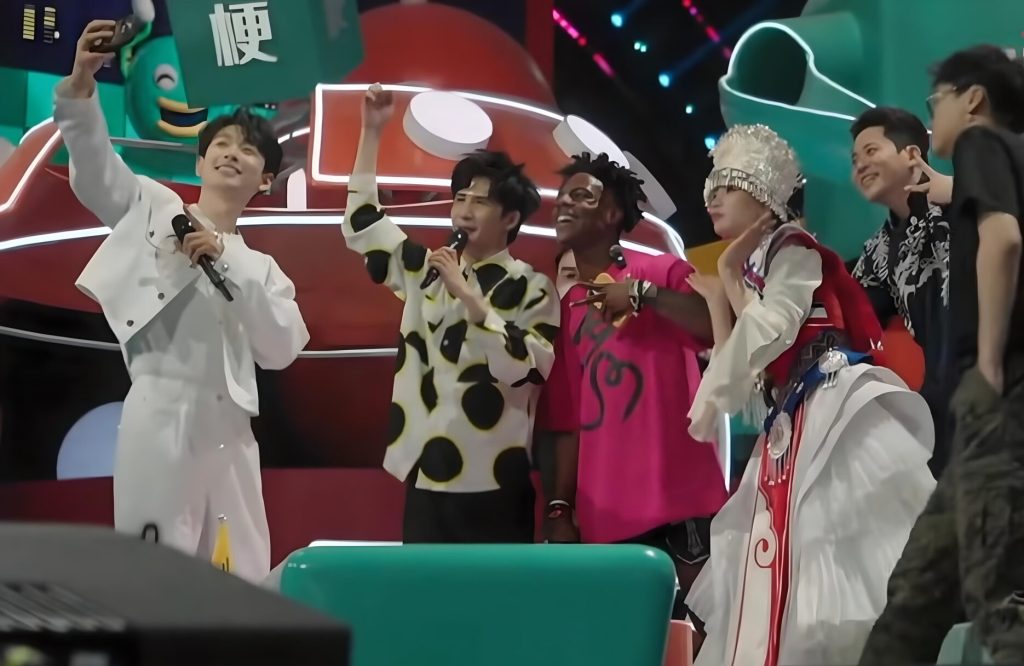
IShowSpeed, as one of the most talented content creator, capture this opportunity to expand his impact. He even went to China and met Zhang Wei on a TV show. Speed does not care other people to sing this song even though the song has the potential to be racist. The whole event is like a humorous speech spoke by Speed. Regardless of whether his purpose is only to increase fans, he successfully used humor to defuse the controversy surrounding this song. Nobody quesitoned whether this song is racist after his China tour. His Black fans see him owning the narrative, meanwhile, his fans, or people pay attention to this event in China start to think and study the context of African Amercians. It’s like he’s saying, “Sing it! Prove to the world that this is a just a normal Chinese word and there is no barrier between us!”
Hence, it is so hard to distinguish humorous hate speech from humorous speech.
The Real Damage Behind the Laughs
Politicians love using humorous hate speech to archieve their goals. Take Trump, for example—he once tweeted a meme of himself morphed into Pepe the Frog. It went viral immediately. That goofy little frog undeniably gave Trump’s image a big, positive boost.
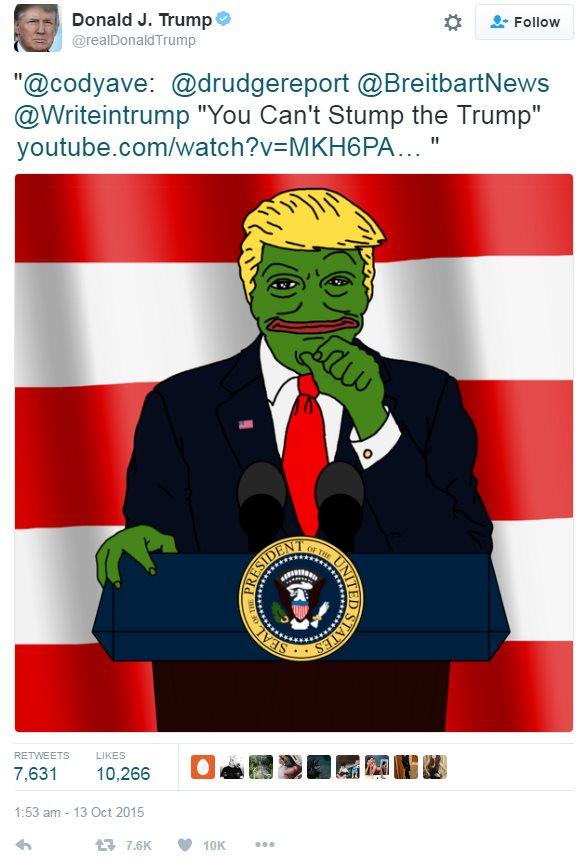
On the surface, it’s just a funny picture, right? But dig deeper, and you’ll see anti-Semitism and white supremacy sneaking into the internet through Pepe. Some of Trump’s fans ran with it, turning the frog into a canvas—drawing it with a Hitler mustache, a yarmulke, or a KKK hood (Forward, 2016).
Schmid et al. (2024) found that extremists and far-right groups have figured out how persuasive and mainstream memes can be, and they’re increasingly using them to spread their ideologies worldwide. They deliberately pick memes that might not even seem far-right at first, numbing people to their ideas so they’re more open to radical views—or even violence. While hateful memes used to just hang out in corners, they are being slowly exposed into mainstream platforms.
This really hurt people’s heart because they are using this meme to spread hate in a way that doesn’t look like hate at first (BBC News, 2016). People are used to Pepe being funny and friendly, so that some groups use people’s positive and profound perception of Pepe to make Pepe a protective umbrella for racial discrimination. There is a huge possbility for them to succeed. It is because no matter what the content of Pepe’s meme looks like, people’s first reaction is that it is funny. Thus, they implicitly permit the spread of hate speech.
How It’s Changing Us All
This kind of meme not only hurt the target group that it aimed to hurt, but also changes everyone’s mind. When you are laughing at something like Trump’s Pepe meme, your brain might think it’s “no big deal” (Schmid et al., 2023). However, it is just like slowly lowering your alarm that something is wrong. It is blurring your line on hate speech, and this is how it works.
Trump’s fans, I mean normal fans who don’t support extremism, they probably share Trump-Pepe memes every day. Every single time they share, they share the dark side of memes. They are not turning into the group of bigots, but it really changes the atmosphere. Hateful thoughts creep into the background.
It also changes the way we talk and communicate. If insults or stereotypes are constantly presented as “jokes,” they creep into everyday conversation. People may not even realize they are picking up on prejudices—it’s just “meme culture.” But it builds walls between groups and makes us quicker to judge than to understand.
What Can We Do About It?
We are now live in social media rather than live with social media. All of us should be careful with our speech. Take Trump and Speed as examples of how we should respond when we encounter humorous hate speech.
1.Keep your head clear
When you come across a negative meme posted by extremists, most people can tell it’s wrong right away. But could you spot the undercurrent of ideology when Trump shared that picture of himself with Pepe the Frog? Not many can—it’s tough. I hope after reading this article, you’ll think a bit more in your daily life. I’m not saying you should be on high alert for every meme—that’d be exhausting. I just want us to nudge each other, to take a second look at what’s floating around online.
2.Say no to humorous hate speech bravely
The silent majority is a hallmark of the internet age. People hesitate to stand up against the mainstream flow and share a different take, and that’s one big reason why humorous hate speech spreads like wildfire. If you see a meme like Pepe wearing a KKK hood, or spot a joke that’s clearly offensive, say something. It doesn’t mean you need to write a long essay or start a fight with strangers online—just be brave enough to voice your thoughts. This isn’t pointless, people will see your opinion, even if they may not stand out and support you, your point will influcence others and make this world better.
3.Take the responsibility of supervising media platforms
At the same time, it is our responsibility to keep an eye on social platforms. X and YouTube let Trump’s Pepe meme and Speed’s clip slide because “funny” hate is hard to pin down (Schmid et al., 2023). Send a message to them or hit their report button, make them to check those content properly. If enough of us push, they’ll tighten things up. Of course, we all have free speech, and whether a joke crosses a moral line is tricky to define. That’s why we need collective wisdom to talk it out, not just let some groups control the narrative.
4.Using humor correctly to bring people together as it suppose to
Think about what Speed did, he use humor to bring people together when faced with discrimination, not tear them down. Share memes that make people laugh, just as memes themselves should be used as a means to unite people, not a weapon of nationalism and extremism. Follow creators who are authentic and not malicious. When Speed turned “nage” into a joke, he showed how humor can break walls that constructed by cultural barrier. Supporting influencer like Speed who keep it real, spreading vibes that connect us, not hate that divides.
Reference
BBC News. (2016, September 28). Pepe the Frog meme branded a ‘hate symbol’. https://www.bbc.com/news/world-us-canada-37493165
Flew, Terry (2021) Hate Speech and Online Abuse. In Regulating Platforms. Cambridge: Polity, pp. 91-96.
Forward. (2016, September 27). ADL declares Pepe the Frog as official hate symbol. https://forward.com/news/350989/adl-declares-pepe-the-frog-as-official-hate-symbol/
Mendiburo-Seguel A, Ford TE (2019) The effect of disparagement humor on the acceptability of prejudice. Current Psychology 42: 16222–16233.
Milner RM (2016) The World Made Meme: Public Conversations and Participatory Media. Cambridge, MA: The MIT Press.
Miltner KM (2014) “There’s no place for lulz on LOLCats”: the role of genre, gender, and group identity in the interpretation and enjoyment of an Internet meme. First Monday 19(8).
Warren C, Barsky A, McGraw AP (2021) What makes things funny? An integrative review of the antecedents of laughter and amusement. Personality and Social Psychology Review 25(1): 41–65.
Schmid, U. K. (2023). Humorous hate speech on social media: A mixed-methods investigation of users’ perceptions and processing of hateful memes. New Media & Society, 27(3), 1588–1606. https://doi.org/10.1177/14614448231198169
Schmid, U. K., Schulze, H., & Drexel, A. (2024). Memes, humor, and the far right’s strategic mainstreaming. Information, Communication & Society, 28(4), 537–556. https://doi.org/10.1080/1369118x.2024.2329610

Be the first to comment